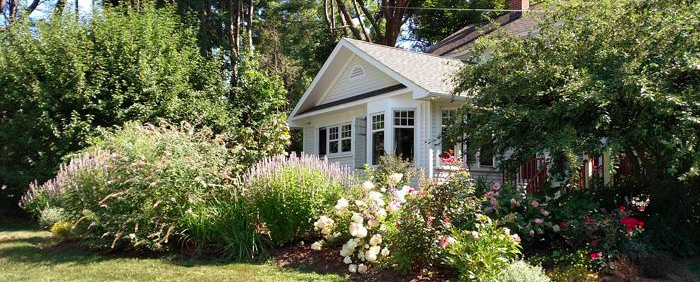
I’m afraid violent winds will damage my trees
Despite their sometimes impressive size and their robustness, the trees may be damaged by strong winds that rush between their branches. Here’s what you need to do so that yours will keep as many branches as possible the next time the wind hits them.
• As a general rule, avoid double apical growth, that is to say, two main branches of the same size emerging from the trunk at the same point, which has the effect of weakening them both. Which one to remove? The one whose angle to the trunk is the highest. The branches that are 90 degrees (right angle) to the trunk are stronger than those at a lower angle. The more branches at 90 degrees on your tree, the stronger it is.
• Ask an arborist to inspect your trees and, if necessary, prune the hard-to-reach, weak or dead edges so that they do not break or fall on a windy day on your house. , your car or your head.
In breaking, a branch left a wound on the trunk of one of my trees
Most of the time, the tree will repair itself. Trees naturally close their wounds to prevent decay and to prevent damage from spreading to other parts. Intervening may cause additional damage. For example, if a cavity is filled with an insulating product or paint is applied to a wound, moisture will be trapped and promote the development of rot. By cons, you can gradually trim what is left of the branch by cutting it as close as possible to the trunk, being careful not to hack the latter. As a preventative measure, cut off any other dead branch before it breaks.
Tree trunks and trimmers do not mix
Threader nylon wire deals more damage to trees than anything else. The damage, which may seem minor, becomes major when the situation is repeated too often. To prevent the problem, it is recommended to take the means to prevent the grass from growing against the trunk of trees or shrubs. For example, place a narrow border about one meter from the trunk and apply mulch within the diameter of the trunk that requires minimal maintenance; or plant on the whole surface a creeping plant loving the shade. It will leave an impression of cleanliness and your trees will stay in better health.
Beware of tree roots
When it comes to trees, prevention is the best treatment, which means protecting the roots from potential damage.
• Make sure cars do not drive or park where there are tree roots. It is also preferable that pedestrians do not pass through these places regularly.
• Never cover the earth roots or stack soil against the trunk. It may take years before a tree suffocates under the effect of accumulated soil, but this will inevitably happen.
• Do not do intensive gardening directly under a tree. By dint of digging and moving the earth, the roots may be damaged. Keep trees and flower beds at a respectable distance from each other; everyone will win.
• If you plan to do major work on your home, protect the root zone of nearby trees with a fence to prevent heavy equipment operators from circulating there. This measure will also have the effect of protecting the trunks against damage that may be caused by equipment or materials.
Inspect your trees regularly
People tend to walk around their gardens often to examine their perennial beds for signs of disease, but all too often they are neglected to do the same for their trees and shrubs. So be sure to periodically visit your property so that you can detect any potential problems your woody plants may have in time.
• If you discover that the branch of a tree is broken or damaged by wind, trim it as soon as possible to reduce the risk of infection.
• Look for signs of disease (discolored or deformed leaves, defoliation or presence of insect masses) and take steps to treat them. But do not overdo the problems. Some liveries (more commonly known as “tent caterpillars”) do not constitute an infestation. Consult with the local Ministry of Agriculture, a nurseryman or other qualified expert to find out if you have an insect problem and, if so, how to handle it.
• In case of a major problem, consult a trained arborist, not just a gardening service.